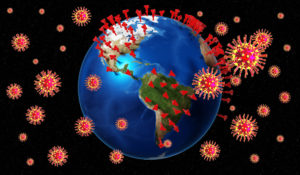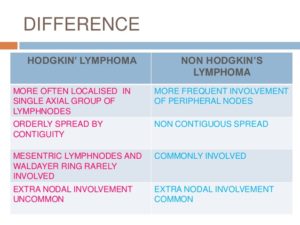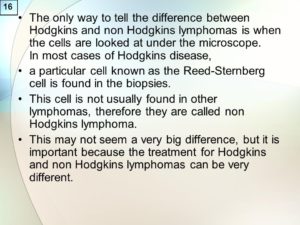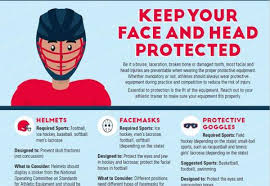“What you get is the initial damage and rush of inflammatory cells, but the damage is so extensive that the body’s immune response is completely overwhelmed — which causes even more immune response, more immune cells and more damage,” said Matthew Frieman, a virologist at the University of Maryland School of Medicine.
PMC U.S. National Library of Medicine/National Institutes of Health states, “Inflammation is a biological response of the immune system that can be triggered by a variety of factors, including pathogens, damaged cells and toxic compounds. These factors may induce acute and/or chronic inflammatory responses in the heart, pancreas, liver, kidney, lung, brain, intestinal tract and reproductive system, potentially leading to tissue damage or disease.
With infection, the virus probably begins to multiply inside cells lining the airway, which are fringed with hairlike structures. Coronaviruses that cause common colds are excellent at infecting the upper airway, while SARS tended to go deeper in the lungs. As the coronavirus gains strength, Frieman said, dead cells are sloughed off and collect in the airway, making breathing difficult.
Inflammation is the immune system’s response to harmful stimuli, such as pathogens, damaged cells, toxic compounds, or irradiation [1], and acts by removing injurious stimuli and initiating the healing process [2]. Inflammation is therefore a defense mechanism that is vital to health [3]. Usually, during acute inflammatory responses, cellular and molecular events and interactions efficiently minimize impending injury or infection. This mitigation process contributes to restoration of tissue homeostasis and resolution of the acute inflammation. However, uncontrolled acute inflammation may become chronic, contributing to a variety of chronic inflammatory diseases [4].
At the tissue level, inflammation is characterized by redness, swelling, heat, pain, and loss of tissue function, which result from local immune, vascular and inflammatory cell responses to infection or injury [5]. Important microcirculatory events that occur during the inflammatory process include vascular permeability changes, leukocyte recruitment and accumulation, and inflammatory mediator release [2, 6].
Various pathogenic factors, such as infection, tissue injury, or cardiac infarction, can induce inflammation by causing tissue damage. The etiologies of inflammation can be infectious or non-infectious (Table (Table1).1). In response to tissue injury, the body initiates a chemical signaling cascade that stimulates responses aimed at healing affected tissues. These signals activate leukocyte chemotaxis from the general circulation to sites of damage. These activated leukocytes produce cytokines that induce inflammatory responses [7].
The inflammatory response is the coordinate activation of signaling pathways that regulate inflammatory mediator levels in resident tissue cells and inflammatory cells recruited from the blood [8]. Inflammation is a common pathogenesis of many chronic diseases, including cardiovascular and bowel diseases, diabetes, arthritis, and cancer [9]. Although inflammatory response processes depend on the precise nature of the initial stimulus and its location in the body, they all share a common mechanism, which can be summarized as follows: 1) cell surface pattern receptors recognize detrimental stimuli; 2) inflammatory pathways are activated; 3) inflammatory markers are released; and 4) inflammatory cells are recruited.”
This is why you see constant commercials stating to stay home especially if you have lung disease, diabetes, low immunity, and heart disease/high B/P. Including obesity. homeless, and the older age (60 years old and up). It’s like a car in that the longer you have the car the more wear and tear on the car well the same with the body for elderly and homeless. The older the patient the harder it is to fight the disease. So there are factors that involve bad turn outs for patients with Covid-19 virus that can go to lung damage to death.
Through worldometer.info as of this past Monday 976,176 cases of corona virus in the USA. Close to one million cases and where is the worst cases NY being in NYC and NJ (there next door neighbor). NY cases are 293,354 with total deaths 22,275
Through nyc.gov in NYC Total cases are 153,204, Hospitalized cases are 39, 635 Confirmed Deaths 11,460 Probable Deaths 5213
Through MSNBC/NBC/John’s Hopkins today at 1126 they show:
WORLDWIDE CASES OF CORONA CONFIRMED CASES: 2,989,493
Total America Confirmed Cases: 974,500
Worldwide with most confirmed cases:
United States: 974, 500 Spain: 226,629
Italy: 197, 675 France: 162, 220 Germany: 167, 770
Cases in America:
New York: 294, 491 New Jersey: 109, 038
Massachusetts: 54, 938 Illinois: 43, 903 California: 43, 672
(source of counts is John Hopkins/NBC NEWS April 27th 2020)
New York City: cases 153, 204 as of 4/26/2020 (Source is https://projects.thecity.nyc/2020 at 1708)
New York City: cases 158, 000 (Source from 2hrs ago by wikipedia, time 4/27/ 2020 is 1130)
Why is NYC over 1/2 the cases of America as of today at 1100?
Size of NYC – of the 5 bureau cities only covers 321 square miles, over 205,000 acres.
Population The population of people in NYC are 8.399 million not including illegals .
Dirtiest City in America – NYC
Sanctuary City – Leaders of sanctuary cities say they want to reduce fear of deportation and possible family break-up among people who are in the city illegally, this can definitely put a city at a potential risk for disease.
Low income groups in the city. This means that in New York City income of $68,720 for a family of four is considered to be low income. (https://www.povertycenter.columbia.edu/poverty-disadvantage-in-new-york-city)
About 1.7 million New Yorkers lived below the poverty line in 2011-2015. This number is larger than the population of Philadelphia or Phoenix, and would be the country’s 7th largest city if ranked separately. The overall poverty rate in New York City has remained relatively steady since 1980, hovering at around 20%.
Homes – primarily apartments and small.
Subways & Buses – a major way of transportation in NYC. Standing right next to each other.
Two international airports – J.F.K. and La Guardia. Traveling in and out of America all over the world including China. In Manhattan there’s China town as well.
Pollution in NYC – in 1oth place the worst pollution by Yahoo Finance (the 7 of the 9 before it where all in California).
See the pattern why NYC is highest with Covid19 virus?
There were numerous factors putting NYC at risk for where they are in count this past year of Covid19 unfortunately and hopefully both Governor Cuomo and Mayor Deblasio will follow what Governor Cuomo stated in the past year on MSNBC that we need to look at this disaster and learn from it to allow us to be better prepared for when this type of a disaster occurs again since NYS, NYC and of course other states were not. Governor Cuomo and facts on epidemics through historical literature points out examples of disasters Americans have gone through before from Great Chicago Fire, Depression, Spanish Flu, 2008 Flu and others which made our nation stronger.





